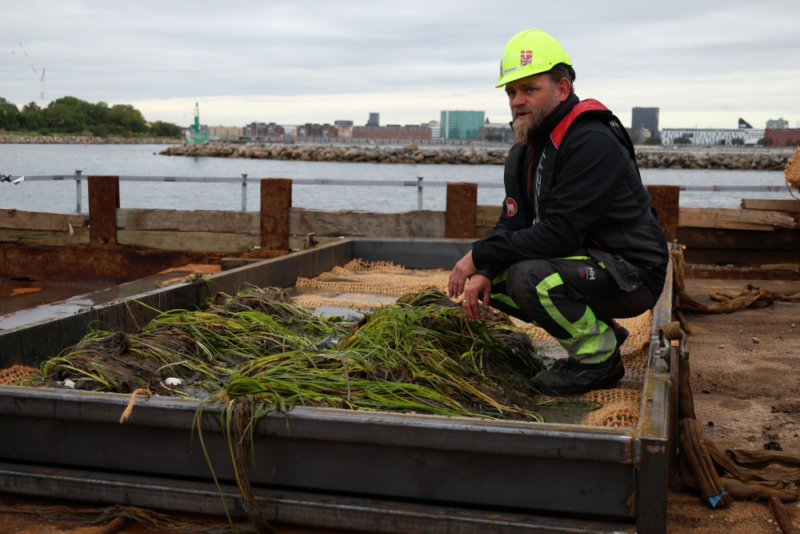WSP attempts a new method, where seagrass cuttings are planted on coconut mats underwater to test if entire mats can be moved to another location without causing the seagrass to perish. If successful, this could make it much easier in the future to replant seagrass along the Danish coasts.
In collaboration with WSP and HedeDanmark, By & Havn has initiated Denmark’s, and perhaps the world’s, largest eelgrass experiment at Lynetteholm in the harbor of Copenhagen. The project aims to investigate the conditions and possibilities for spreading eelgrass along the coasts in the future. In the initial trial, eelgrass is being harvested from the seabed and transferred to the new canal at Trælastholmen in Nordhavn. If successful, the canal could become a home for flourishing eelgrass, benefiting both the marine environment and underwater biodiversity.
Large scale transplantation
Until now, planting eelgrass has been done with individual shoots, and it is extremely time- and resource-intensive. But if this project is successful, we can conduct seagrass transplantations on a large scale in the future, making it possible to restore habitats and improve water quality to a significantly higher degree than before.
Isolated events such as the establishment of a new beach, burying a gas pipeline, or constructing a tunnel underwater can make life difficult for eelgrass locally, and here, a seagrass transplantation can make a difference.
More eelgrasses not only improve water quality but also serves as a crucial habitat for many animals, micro- and macroalgae, contributing to restoring balance in the marine environment.
Soon, the new canal at Trælastholmen may be filled with eelgrass sourced from the seabed east of Trekroner in Copenhagen Harbor, where the construction work for Lynetteholm Phase 2 begun in October 2023. The relocation of seagrass is an unusual experiment conducted by By & Havn in collaboration with WSP as advisor and HedeDanmark as entrepreneur. The purpose is to secure and store the eelgrass that would otherwise perish during the construction of Lynetteholm, so it can later be planted in new areas. If the experiment succeeds, it is estimated that in the future, it will significantly ease the process of spreading eelgrass to other regions.
By & Havn had prepared the new canal at Trælastholmen to house the eelgrass from the area near Trekroner.











